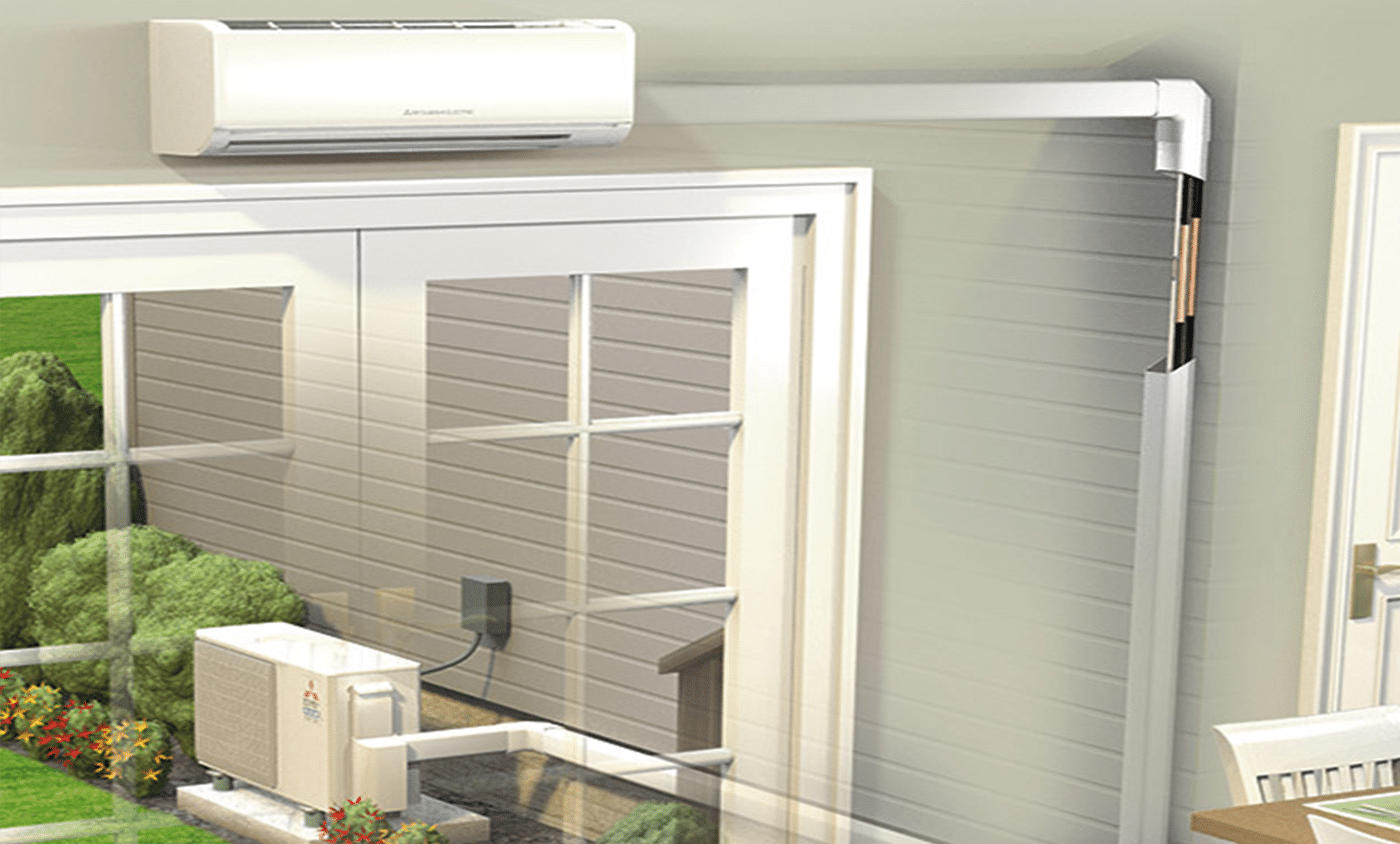A mini-split air conditioning system, also called a ductless mini split system, is a smart alternative for uncomfortable homes where traditional cooling and heating systems aren’t getting the job done.
Traditional approaches to cooling and heating include use of air conditioners, ducted air-based central cooling and heating, hydronic radiators (water-based heating) or electric space heaters.
Ductless minis, on the contrary, are ideal for homes where installing ducts would be expensive or infeasible. They have no ducts, so they avoid the energy losses associated with the ductwork of central-forced air systems. Energy.gov reports that duct losses can account for more than 30% of energy consumption for space conditioning, especially if the ducts are in an unconditioned space, such as an attic.
With a ductless mini split system, its air-source heat pump can run in “reverse,” supplying hot air in the winter and cool air in the summer. If you’ve ever waved your hand over your AC unit outside on a hot day while it’s cooling your house, you probably noticed the outdoor unit was blowing hot air. During cold weather, the heat pump component reverses this cycle to move this heat into the house.
The main advantages of mini split air conditioning systems are their small size and flexibility for zoning or heating and cooling individual rooms. Many models can have as many as four indoor air-handling units (for four zones or rooms, each with its own thermostat) connected to one outdoor unit. The number depends on how much heating or cooling is required for the building or each zone (which, in turn, is affected by how well the building is insulated and air sealed.) A home that includes a mini split system along with proper insulation and air sealing will provide the highest level of comfort.
The hook-up between the outdoor and indoor units generally requires only a three-inch hole through a wall for the conduit. A homeowner can locate the outdoor unit as far away as 50 feet from the indoor evaporator. This makes it possible to cool rooms on the front side of a house, but locate the compressor in a more advantageous or inconspicuous place on the outside of the building.
In comparison to other add-on systems, mini splits offer interior design flexibility. The indoor air handlers can be suspended from a ceiling, mounted flush into a drop ceiling or hung on a wall. Floor-standing models are also available. Most indoor units are about seven inches deep and have sleek, high tech-looking jackets. Many also offer a remote control to make it easier to turn the system on and off when it’s positioned high on a wall or suspended from a ceiling.
With a split system, you no longer have an obstructed view of the outdoors, since your windows are free of cumbersome window-mounted air conditioning units. Split systems can also help keep your home safer, because there is only a small hole in the wall. Traditional through-the-wall and window-mounted room air conditioners can provide easy access for intruders.
Contact CT Retrofit today for a free home energy evaluation and learn more about your options for high-efficiency heating and cooling systems and get ductless AC.
CT Retrofit, Keeping Connecticut Comfortable.






